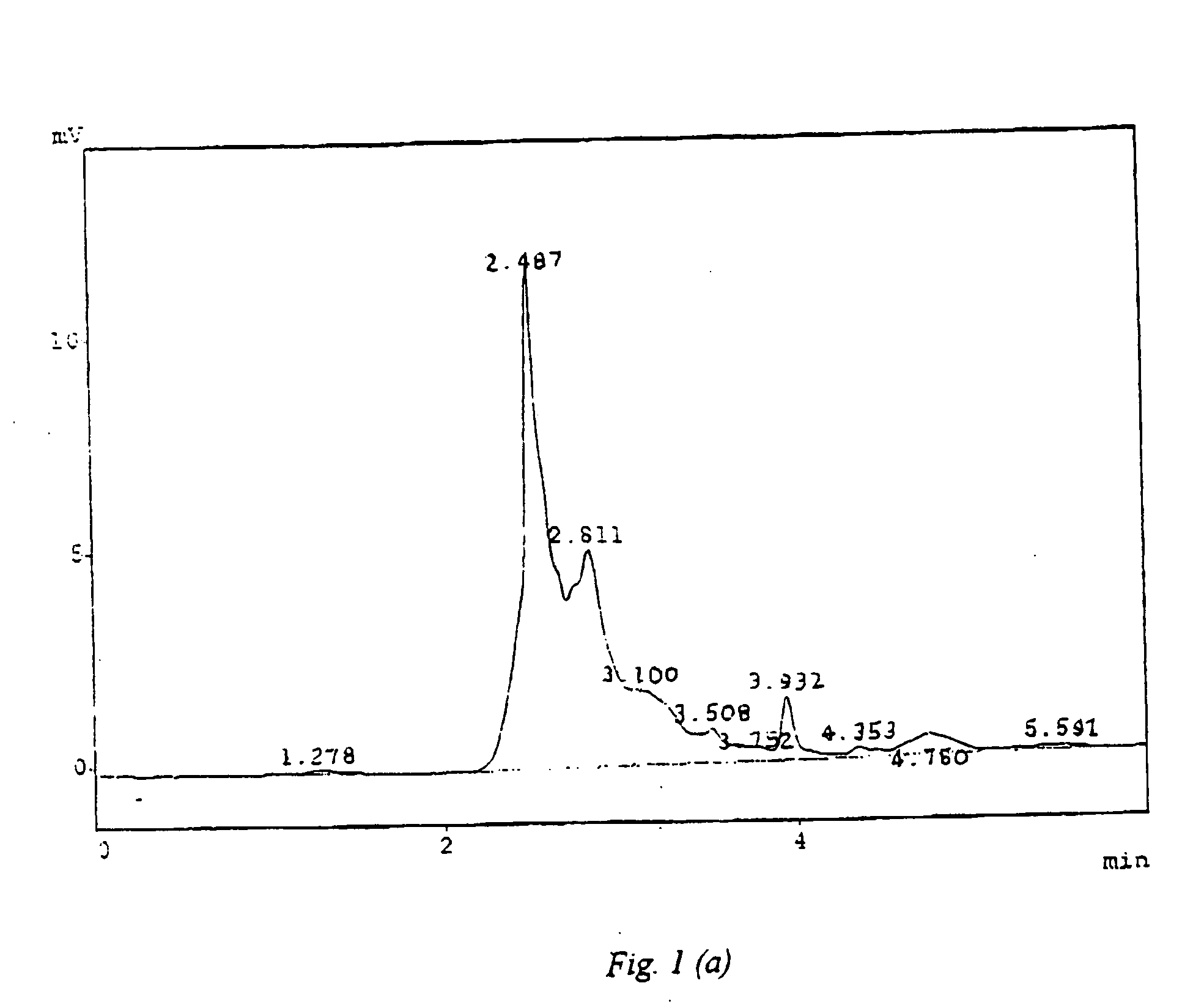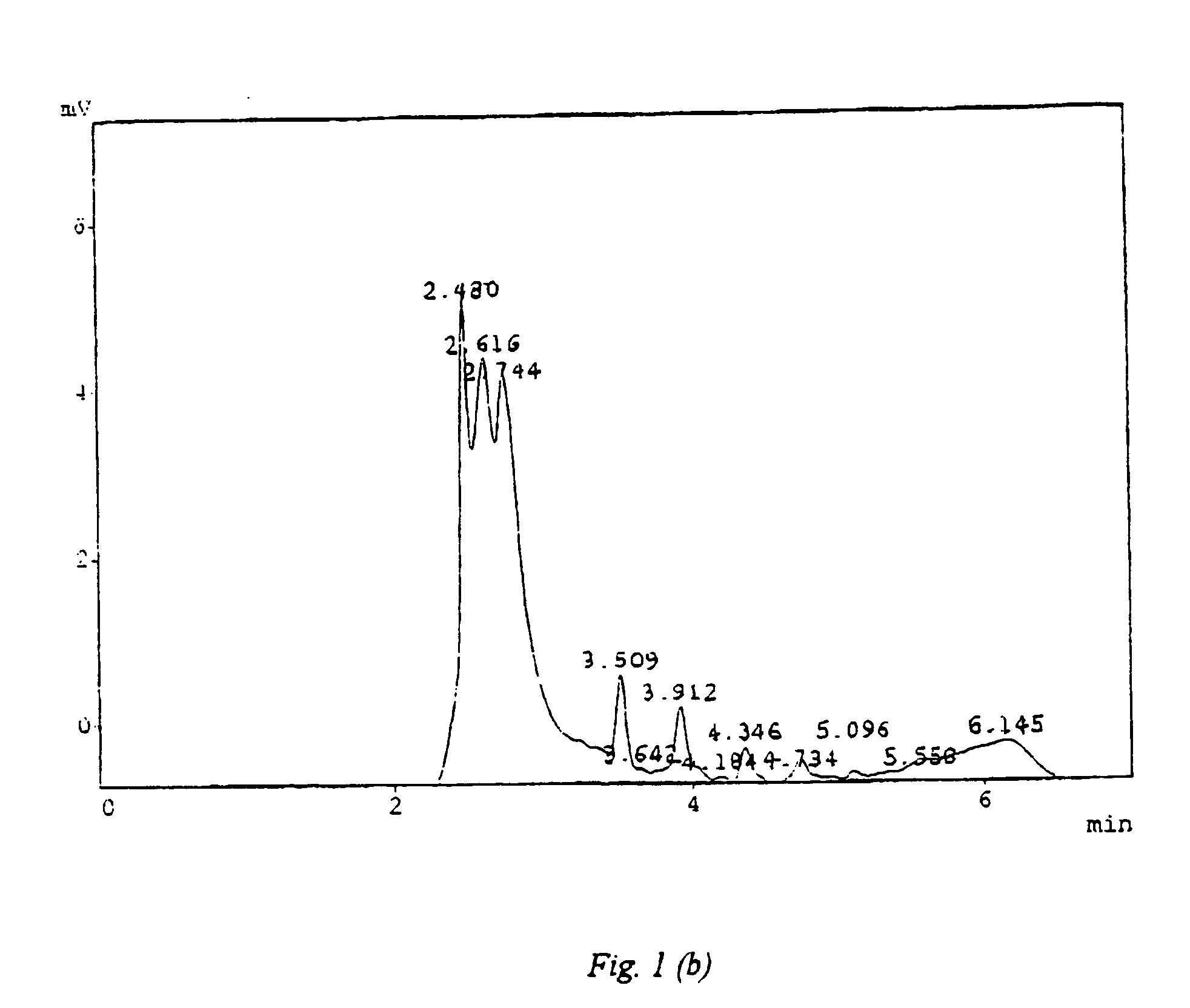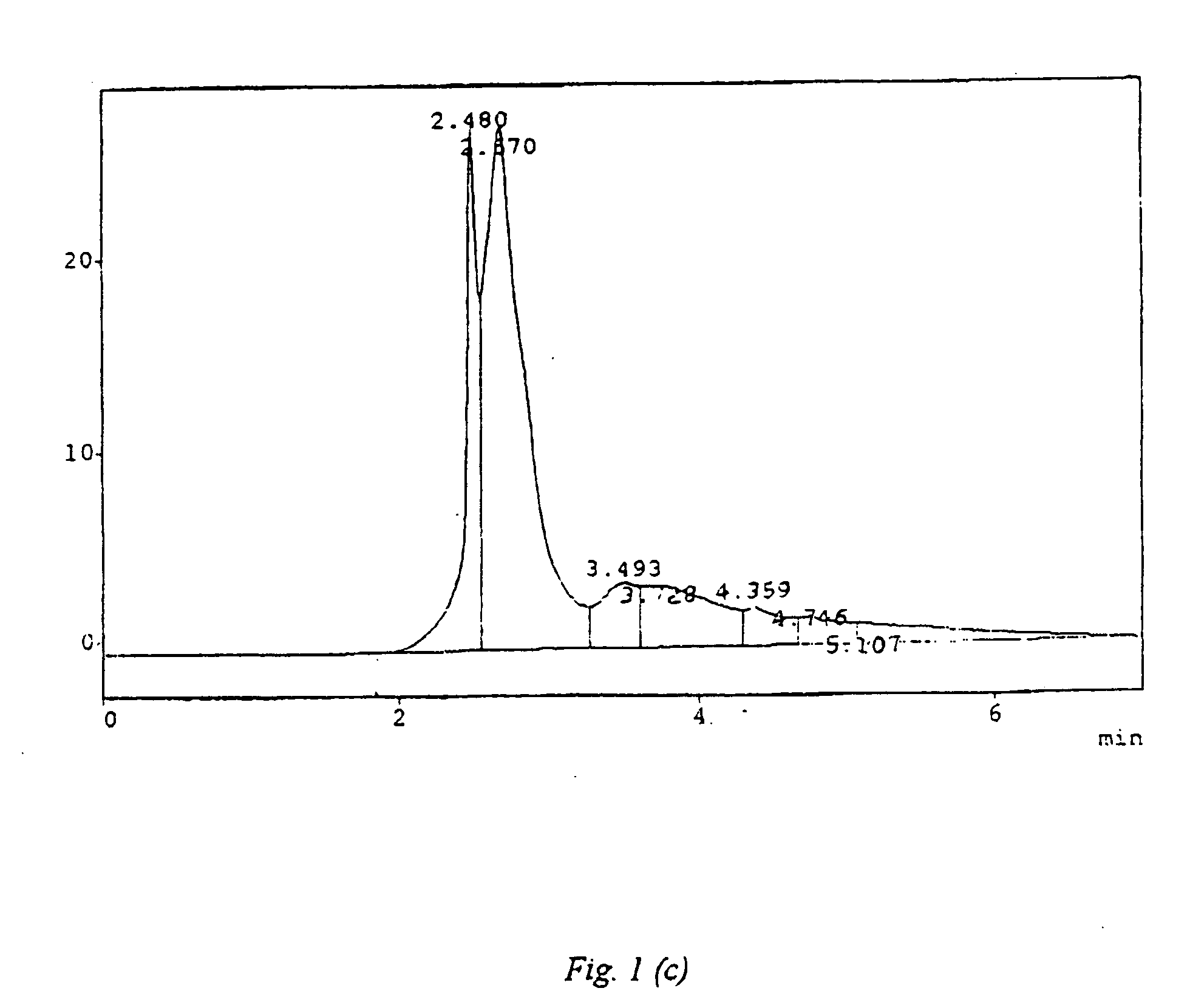Herbal extracts of salicornia species, process of preparation thereof, use thereof against tuberculosis
a technology of salicornia and extracts, applied in the field of new salicornia extracts, can solve the problems of no use of plants for drug/medicinal purposes no treatment of subjects, etc., and achieves the effects of high activity, simple and economical, and high shelf life without significant loss of activity
- Summary
- Abstract
- Description
- Claims
- Application Information
AI Technical Summary
Benefits of technology
Problems solved by technology
Method used
Image
Examples
example-1
[0110] The halophytic plant material was collected from coastal area of Gujarat near Bhavnagar district, located at 21° 75′ N Latitude & 72° 17′ E Longitude to 21° 09′ N latitude and 72° 00′ E longitude at a varying altitude of 10-27′ above the mean sea level of the Gulf of Cambay. The plant material was collected from the above site during its maturity stage in February-March. It was washed off all the debris / mud with tap water followed with deionized water. It was further processed and separated into various parts, i.e., whole plant without root, root, spikes, husk and seeds. These parts were air dried at ambient temperature. The dried plant material was powdered in mini grinding mill to obtain fine powder of the mesh size of 16 to 20μ. The parts were then further processed for crude extract preparation with the solvents: methanol-water (95.5), methanol-water (1:1) at ambient temperature and pure water at 80-90° C. These crude extracts were subjected to bioassay for anti-tubercula...
example-2
[0111] The most active extract from the example of Example-1, i.e., the water exact of root which yielded 18-20% on basis of dry material, was fractionated into 5 fractions. The first fraction (F1) was obtained through extraction with neat butanol the residue was subjected to extraction with methanol-chloroform (1:1) to yield the second fraction (F2), the residue was then subjected to extraction with neat methanol to yield the third fraction (F3), the residue was then subjected to extraction with methanol-water (1:1) to yield the fourth fraction (F4) and the residue was then treated with pure water to obtain the fifth fraction (F5) after filtration. The yields of F1, F2, F3, F4 and F5 were 10%, 13%, 51%, 10%, and 9%, respectively. All the five fractions showed MIC of 25 μg / ml, whereas F2, F3 and F4 show 75% inhibition even at the concentration of 6.25 μg 1 ml as compared to control. The HPLC profiles of F2, F3 and F4 at 220 nm, taken on an analytical HPLC instrument using RP-18 reve...
example-3
[0112]Salicornia brachiata was again collected after one year from the same location defined in Example 1. Collection was made at the same growth stage and the process of preparation of crude extract was repeated with the root of the plant as in Example 1. The extract was subjected to an identical bioassay as described in Example 1. The extract inhibited growth to M. tuberculosis H37RV in vitro at 50 μg / ml while in vivo tests showed 10-fold less load of bacilli in the lungs of mice receiving treatment.
[0113] The Salicornia plant having active components was collected at fully matured stage and used for the extract preparation. The plant material is washed with tap water followed by deionized water to remove mud, dust particles and other foreign matter, dried cut to small pieces, pulverized and soaked in the deionized water. The soaked plant material is heated on water bath at 80-90° C. temp. The water-soluble extract was decanted and filtered. The above process was carried out for ...
PUM
 Login to View More
Login to View More Abstract
Description
Claims
Application Information
 Login to View More
Login to View More - R&D
- Intellectual Property
- Life Sciences
- Materials
- Tech Scout
- Unparalleled Data Quality
- Higher Quality Content
- 60% Fewer Hallucinations
Browse by: Latest US Patents, China's latest patents, Technical Efficacy Thesaurus, Application Domain, Technology Topic, Popular Technical Reports.
© 2025 PatSnap. All rights reserved.Legal|Privacy policy|Modern Slavery Act Transparency Statement|Sitemap|About US| Contact US: help@patsnap.com



